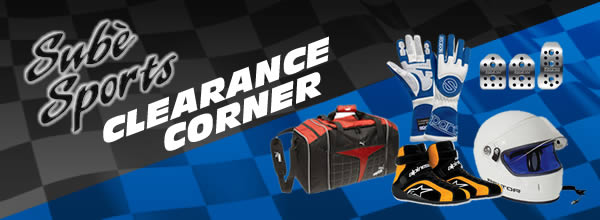Racing Fire Extinguishers for Pro Motorsports: Lifeline Systems
Lifeline delivers proven performance with rapid knockdown and even agent distribution for demanding race environments, backed by decades of motorsport development.
Safety is prioritized through robust cylinders, precision nozzles, and reliable actuation that meets rigorous competition use without compromise.
Systems balance low weight and smart packaging for cockpit comfort while carrying FIA and SFI approvals across Zero 2000 foam and Zero 360 gaseous ranges.
Why Racing Fire Extinguishers Matter
Motorsport concentrates heat, fuel, and electrical load in tight spaces.
Racing Fire Extinguishers control first seconds, protecting drivers, cars, and events.
A compliant system limits fire growth and buys rescue time at speed.
The right bottle, agent, and nozzle layout reduce risk without excess mass.
Benefits
- Fast flame knockdown in engine bays and cockpits under load.
- Targeted discharge reduces reflash and limits collateral damage.
- Lightweight packages preserve balance and lap-time consistency.
- Track-legal hardware satisfies scrutineering without last-minute changes.
- Clear service intervals simplify compliance and team workflows.
- Racing Fire Extinguishers enhance resale value and team reputation.
Key Features to Evaluate
- Certification: Confirm FIA homologation or SFI rating per series rules.
- Agent Type: Foam (AFFF) for liquid fuel; FK-5-1-12 gas for clean discharge.
- Capacity: Match bottle volume to cabin size and engine bay risk.
- Discharge Method: Mechanical cable or electric push-button initiation.
- Nozzle Count and Orifice: Ensure flow rate and spray pattern suit layout.
- Line Material: PTFE-lined or aluminum hardline for heat and kink resistance.
- Mounting: FIA/SFI brackets with anti-rotation straps and shear protection.
- Serviceability: Clear refill, date stamping, and available spares.
- Weight: Optimize bottle mass against class minimums and ballast strategy.
- Data: Electric systems may log activation for post-session review.
History and Evolution
Early race cars relied on handheld dry chemical units with limited reach.
Fixed plumbed bottles followed, bringing hardlines and cockpit pulls.
Modern systems refined agents, flow control, and activation redundancy.
Racing Fire Extinguishers now deliver calibrated discharge curves and wider coverage.
Current solutions integrate lighter bottles and compact valves for easier packaging.
Modern Materials and Technology
Aluminum and composite cylinders reduce weight without sacrificing integrity.
FK-5-1-12 gaseous agents flood compartments without residue or conductor risk.
AFFF foam blankets liquid fuels, improving cooling and reflash resistance.
Thermal-stable PTFE hoses maintain bore under vibration and radiant heat.
Electric control boxes enable dual triggers and indicator lamps for status checks.
Racing Fire Extinguishers pair engineered nozzles with mapped orifice sizes.
Accessories, Rules, and Compliance
Series rules define bottle size, agent type, and activation method.
Verify date stamps, homologation labels, and current service tags before scrutineering.
- Dash or tunnel-mounted activation with guarded switches or T-pulls.
- External marshal pull accessible from the A-pillar or cowl area.
- Approved brackets with minimum two straps and positive retention.
- Nozzle placement: fuel rail, turbo hot side, footwell, and battery zones.
- Decals: standardized E-mark and activation location labels.
- Wiring looms or Bowden cables routed away from heat and pinch points.
- Racing Fire Extinguishers must match logbook entries and tech sheets.
Common Mistakes to Avoid
- Undersized bottles for large cabins or turbocharged engine bays.
- Nozzles aimed too high, missing fuel rails and floor pan pools.
- Sharp hose bends that restrict flow and delay discharge.
- Expired service dates causing failed tech inspection.
- Single-zone coverage when rules require cockpit and engine zones.
- Unprotected cables near headers leading to actuation failure.
- Mounting to thin panels without reinforcement plates.
- Ignoring reflash risks during post-activation car recovery.
Lifespan and Care
- Follow annual inspection and refill intervals per label and rulebook.
- Weigh bottles quarterly; log values to detect leakage early.
- Replace O-rings and burst discs during scheduled service.
- Pressure-test lines after any off or major repair.
- Document nozzle maps with photos for repeatable reinstall.
- Keep spares: pull cables, clamps, nozzles, and decals on hand.
- Racing Fire Extinguishers should be re-certified after any discharge.
Who Needs This Gear
Professional teams running FIA or SFI classes need full compliance.
Club racers and endurance crews require reliable, serviceable protection.
Time-attack and sprint competitors want low weight and fast installation.
Track-day users benefit from plumbed systems beyond handheld units.
Builders, fabricators, and prep shops seek consistent hardware and spares.
Racing Fire Extinguishers support all levels where heat and fuel converge.
Choosing the Right Configuration
Define risks by powertrain, fuel type, and compartment volume.
Select agent and capacity that address liquid and electrical threats.
Map nozzles to cover low pools, hot turbo zones, and driver ingress points.
Pick mechanical actuation for simplicity, or electric for redundancy.
Validate labels: FIA for international events, SFI where specified.
Racing Fire Extinguishers should match team service capabilities and spares.
FAQs
Do I need FIA or SFI for my series? Check your rulebook first. International events typically require FIA homologation. Many U.S. series accept SFI, while some accept either.
Foam or gas: which agent is best? Foam blankets liquid fuels and cools hot surfaces. Gas agents flood spaces cleanly and suit mixed electrical risks; many teams run gas in cockpits.
How often should systems be serviced? Follow the label and sanctioning body interval. Annual inspection is common; bottles need periodic refill or hydro service by date stamp.
Can I install the system myself? Yes, with proper tools and adherence to nozzle maps. Many teams handle installs; scrutineers will verify routing, labels, and activation access.






